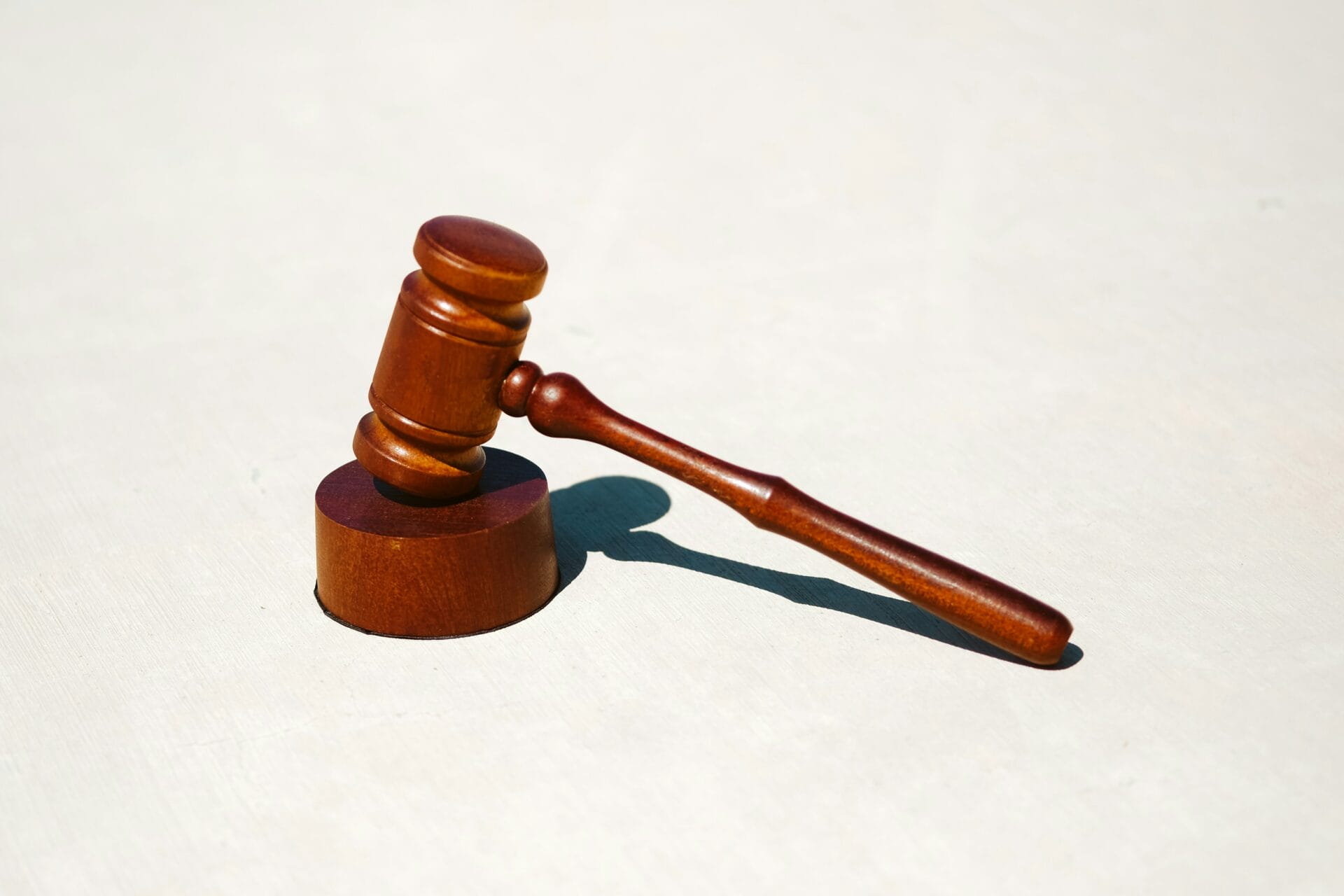Blog
9 Nasty Trademark Infringement Examples — and How to Avoid Them
- Trademark Solutions

In the high-stakes world of business, avoiding a costly and time-consuming trademark infringement lawsuit is a top priority for any organization. Trademark rights and laws, varying across different jurisdictions, aim to prevent confusion among consumers regarding the origin of goods or services. If a trademark office or court determines there’s a likelihood of confusion, the financial and reputational repercussions can be severe. With average litigation costs ranging from $120,000 to $750,000 and the potential for prolonged legal battles, the impact on any company can be staggering.
Regardless of their size, companies face significant challenges when defending against a trademark infringement claim. For large organizations, the damage extends beyond financial losses to potential harm to their public image, especially when these disputes make headlines.
In this blog post, we’ll explore nine nasty trademark disputes, many of which involve brands you’re familiar with, along with some key lessons learned.
1. 3M v3N
Multinational conglomerate 3M filed a lawsuit against Changzhou Huawei Advanced Material Co Ltd for using the name “3N” on their products. Despite differences in the products and pricing, 3M claimed that “3N” was designed to mislead consumers and infringe on their well-known trademark.
3M argued that the use of “3N” was intentionally confusing and that the similar mark had allowed Changzhou Huawei Advanced Material Co Ltd to acquire clients and market share by leveraging 3M’s established reputation.
Verdict in favor of 3M.
Lesson learned: Choosing a name that closely mimics a well-known brand, regardless of product differences, can still result in infringement claims and significant legal penalties if it is deemed likely to create consumer confusion. Trademark protection is essential for maintaining brand integrity.
2. Academy Awards v. GoDaddy
The Academy Awards and domain retailer GoDaddy were in a five-year legal battle over “cybersquatting” issues. Initially filed in 2010, the Academy alleged that GoDaddy’s decision to allow customers to buy “confusingly” similar domain names, such as 2011Oscars.com, allowed profit from individuals who wanted to “park” on these domains and collect revenue.
Initially, the Academy managed to demonstrate in court that 57 domains were sold by GoDaddy with the potential for confusion. Ultimately, the judge ruled that GoDaddy did not act in bad faith and was protected under the Anticybersquatting Consumer Protection Act as an intermediary.
Verdict in favor of GoDaddy.
Lesson learned: Domain registrars can be protected from trademark infringement claims if they act in good faith and do not engage in cybersquatting themselves.
3. Louis Vuitton v. Louis Vuiton Dak
One of the more shocking examples of international trademark infringement is the case that involves a South Korean fried chicken restaurant losing a trademark battle with designer Louis Vuitton. The court ruled in the designer’s favor after determining that the restaurant’s name of “Louis Vuiton Dak” was too similar to “Louis Vuitton”. In addition to the name infringement, the restaurant’s logo and packaging closely mirrored the designer’s iconic imagery.
The restaurant was ultimately hit with another ₩14.5 million fine for non-compliance, after changing their name immediately after the first ruling to LOUISVUI TONDAK. Many brands can avoid similarly expensive legal battles by avoiding mirroring their brand closely after another, even if the products and purchase channels have nothing in common.
Verdict in favor of Louis Vuitton.
Lesson learned: Using names and logos that closely mimic those of a well-known brand, even in a different industry, can lead to successful trademark infringement claims and require rebranding efforts.
4. Starbucks v. Freddocino
Starbucks filed a lawsuit against the parent company of New York’s Coffee Culture Cafe for launching a drink called the “Freddocino” The lawsuit’s documents allege that not only does the drink appear similar to the Frappucino, the structure of the name also contains enough similarities to cause “confusion in the marketplace” and diminish “Starbucks’ brand equity.”
Starbucks does own the trademark for the term Frappucino, and additionally alleged that Coffee Culture has created deceptive packaging to make it appear the term “Freddocino” is trademarked when it is not. The case was settled out of court in Starbucks’ favor, with the smaller coffee shop agreeing to stop using the “Freddocino” name.
Verdict in favor of Starbucks.
Lesson learned: Creating product names that closely resemble established trademarks, especially in the same industry, can lead to legal challenges and require renaming products to avoid trademark infringement. This case also highlights the need for trademark owners to vigilantly monitor their intellectual property and act against any similar mark that might cause confusion.
5. Segway v. Swagway and Razor
Love them or hate them, there’s no question that the two-wheeled standing scooter has been associated with Segway since 2001. They sued Kickstarter-backed Hovertrax, which is now owned by Razor, as well as Swagway for selling hoverboards under names that were too similar to “Segway.”
Segway claimed that the use of names like “Swagway” and the marketing of similar personal transportation devices created customer confusion and diluted their brand. VentureBeat notes that the motivation for these lawsuits could have been based on more than just the mentioned noticeable similarity of the products; Swagway also faced extensive safety and accident lawsuits for incidents that involved falls and fires.
It was determined that Swagway creates a likelihood of confusion with Segway, with the case being settled out of court. Swagway agreed to change its name to Swagtron and Razor also agreed to differentiate its branding.
Verdict in favor of Segway.
Lesson learned: It’s vital to have clear differentiation in product names and marketing to protect brand integrity and market position. Trademark holders must ensure their trademarks are distinct to prevent consumer confusion.
6. Nestle v Cadbury
Nestle and Cadbury have had multiple trademark disputes over the years, with one of the most notable involving Cadbury’s attempt to trademark a specific shade of purple (Pantone 2685C), which it had been using on its Dairy Milk chocolate packaging for decades. Cadbury argued that the color had become synonymous with its brand in the eyes of consumers and thus deserved legal protection as a trademark. Nestle opposed this move, claiming that allowing Cadbury to trademark such a broad use of the color would unfairly restrict competition.
The UK Intellectual Property Office initially granted the trademark, acknowledging that the color had become distinctive of Cadbury’s goods. However, Nestle challenged the decision, arguing that the trademark application was too vague and did not meet the necessary requirements for specificity and clarity under trademark law. After years of legal battles, the UK Court of Appeal ruled in favor of Nestle in 2013. The court decided that Cadbury’s application lacked the precision needed to define the trademark clearly and that Cadbury’s description of the color’s use was too broad and could apply to a wide range of products and packaging, thus failing to meet the necessary legal standards for a trademark.
Verdict in favor of Nestle.
Lesson learned: Overly broad or vague descriptions are likely to be challenged and rejected, emphasizing the need for substantial evidence of a color’s distinctiveness and association with a brand. The case also illustrates the importance of balancing brand protection with fair market competition, showing that broad trademarks can hinder other companies’ abilities to compete effectively.
7. Jack Daniel’s vs. Bad Spaniels
Jack Daniel’s, the iconic whiskey brand, sued VIP Products, the maker of a dog toy called “Bad Spaniels.” The toy closely mimicked the distinctive Jack Daniel’s whiskey bottle, featuring similar design elements, fonts, and themes, but with humorous and irreverent twists tailored for a dog toy.
Jack Daniel’s argued that VIP Products’ use of similar trade dress (packaging and design elements) and branding was likely to cause confusion among consumers, leading them to believe that the toy was either made by or endorsed by Jack Daniel’s. The whiskey maker also contended that the parody nature of the toy could tarnish their brand’s image and dilute its distinctiveness.
The initial court ruling favored Jack Daniel’s, stating that the toy’s similarities to the whiskey bottle could confuse customers and potentially harm the brand’s reputation. On appeal, the court reversed this decision, siding with VIP Products, emphasizing that the parody was protected speech and that the humorous nature of the toy was unlikely to cause significant consumer confusion.
Verdict in favor of Bad Spaniels.
Lesson learned: While parody can sometimes lead to trademark infringement disputes, it is often upheld as a form of free expression, especially when the intent is humorous and not deceptive. Trademark owners must balance protecting their brand from dilution with the understanding that parodies, even those that borrow heavily from their trade dress, may be legally permissible. Brands must be prepared for the possibility that their trademarks might be used in ways that poke fun at them without causing actual harm.
8. Adidas v. Forever21
Adidas‘ three-stripe design is one of its most recognizable trademarks, used extensively on a variety of products. The company has aggressively protected this mark, pursuing legal action against many companies over the years. In this case, Adidas argued that Forever 21’s use of similar stripe designs on their clothing and accessories was likely to confuse customers into believing that there was an association or endorsement by Adidas.
Adidas filed multiple lawsuits against Forever 21, which were challenged by Forever 21, who argued that the use of stripes on clothing is a common design element in the fashion industry and should not be monopolized by one company. They contended that their stripe designs were sufficiently distinct and did not cause consumer confusion.
The case did not go to a final court verdict; instead, it was settled out of court. The terms of the settlement were not disclosed to the public.
Verdict unknown.
Lesson learned: This case highlights the difficulty of trademarking common design elements, such as stripes, which are widely used in the fashion industry. Fashion brands should strive to create designs that are distinctive enough to be protected under trademark law, and avoiding generic elements that are common within the industry.
9. Ferrari vs. Philipp Plein
The legal battle between Ferrari and fashion designer Philipp Plein began back in 2019, when Ferrari accused Plein of trademark infringement for using images and videos of Ferrari cars in a way that implied endorsement by Ferrari. Plein posted several Instagram photos and videos showcasing his fashion products with Ferrari cars prominently displayed.
Ferrari initially sent a cease-and-desist letter to Plein, demanding the removal of the infringing posts and the cessation of using Ferrari’s trademarks without authorization. When Plein did not comply fully, Ferrari took legal action, filing a lawsuit in Italy seeking damages and an injunction to stop the unauthorized use of its trademarks.
Plein publicly responded to the claims, arguing that he was merely showcasing his personal lifestyle, which included his own Ferrari cars, and that there was no intent to mislead consumers or suggest an endorsement.
The court ruled in favor of Ferrari, granting the injunction and ordering Plein to remove the infringing posts from his social media accounts. Plein was also ordered to pay legal fees and potentially face additional damages, although the specific financial details were not disclosed.
Verdict in favor of Ferrari.
Lesson learned: Individuals and businesses should seek explicit permission for trademark use, especially in commercial contexts, to avoid legal repercussions. It’s also important to clearly distinguish between personal lifestyle content and promotional content that could be perceived as commercial exploitation. Trademark holders must be vigilant and persistent in protecting their trademarks and registered marks to prevent unauthorized use.
How to avoid nasty trademark infringement lawsuits
As we’ve seen with the cases here, the outcomes could have been completely avoided with more effective trademark research. There’s no question that a trademark search can be time-intensive and confusing, especially if it’s done right. Human error and incomplete searches can open your brand to enormous risks, such as those seen in these nine notable infringement lawsuits.
Corsearch offers cutting-edge, comprehensive trademark search solutions that save time, limit noise, and afford security. Combining advanced AI technology and seasoned industry expertise, Corsearch Trademark Searching can help you establish new brands with minimum conflict and maximum security.
For comprehensive results and best-in-class customer service, perform your trademark searches with Corsearch.
Speak to one of our experts
Find out how you prevent consumer confusion through our pharma trademark solutions.

- Access 1100+ online databases covering trademarks, common law, domain names, and regulatory data trusted by over 5,000 clients
- Generate candidate names for new brands and instantly screen for conflicts
- Leverage industry expertise with trademark clearance searches to prepare your candidate names for registration
- Proactively protect your brand and prove the value to your business
Corsearch is trusted by:






